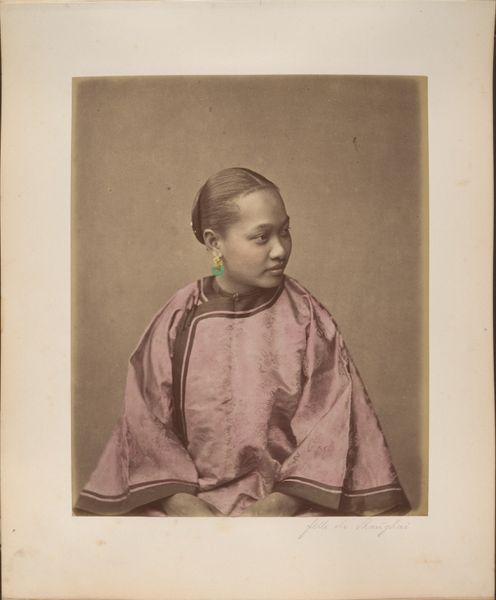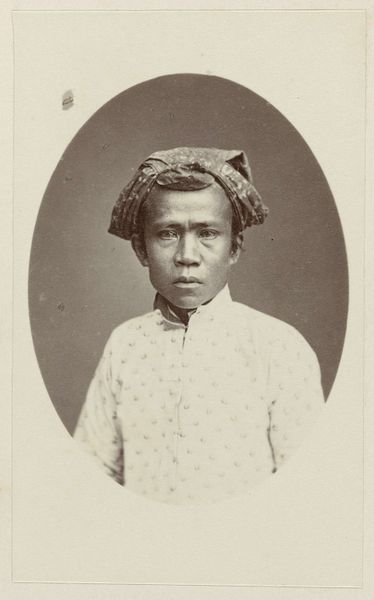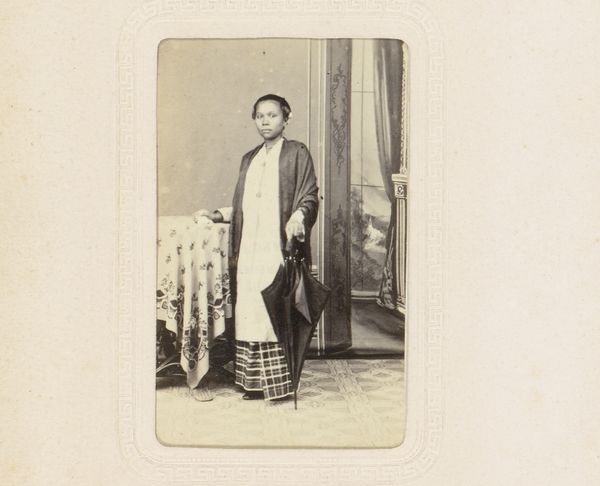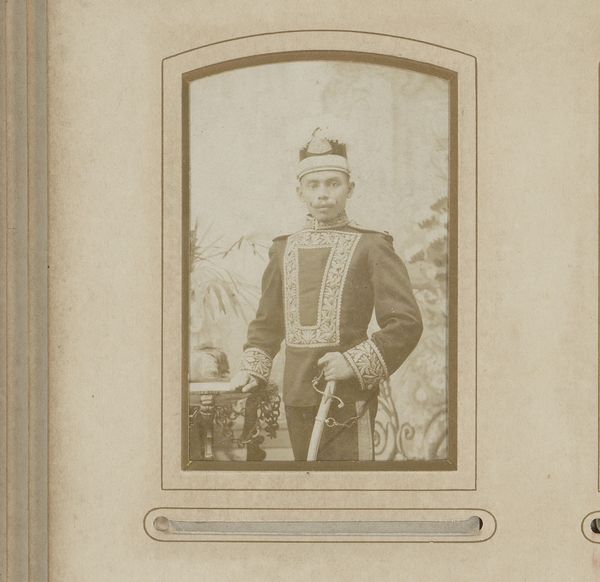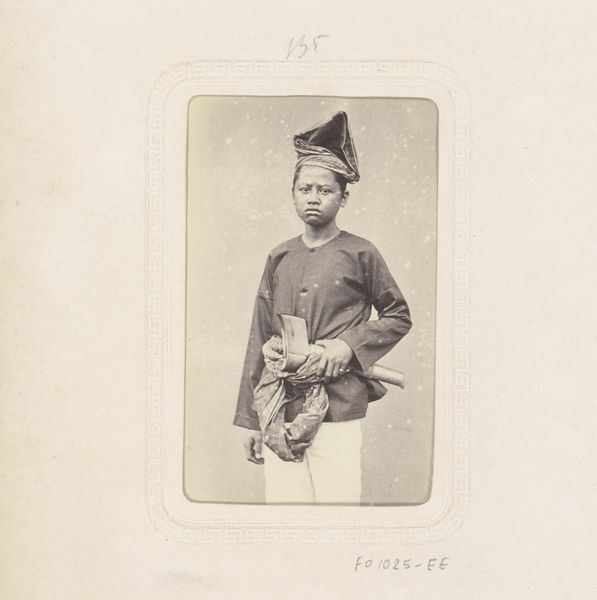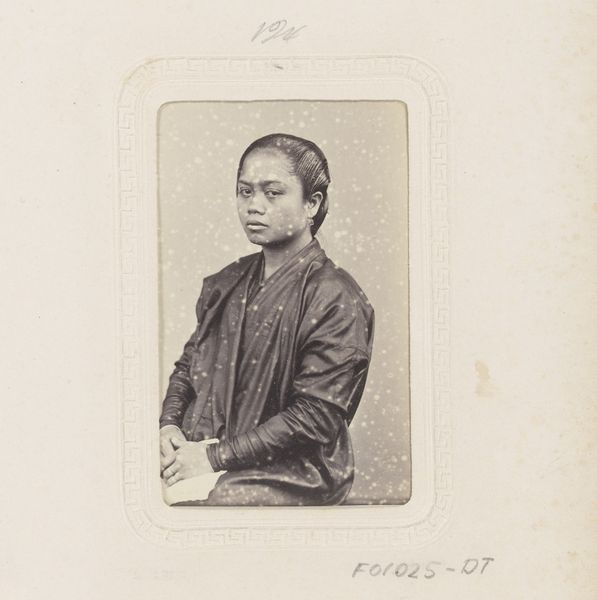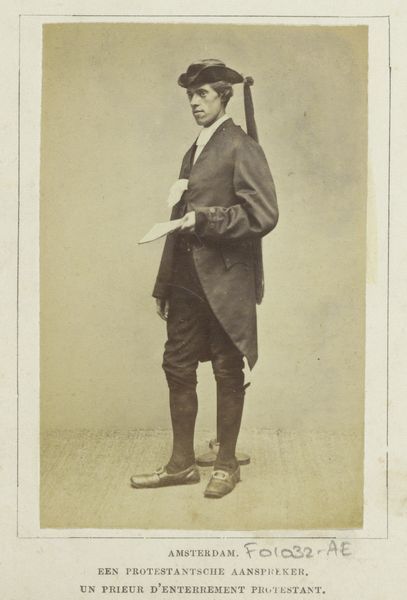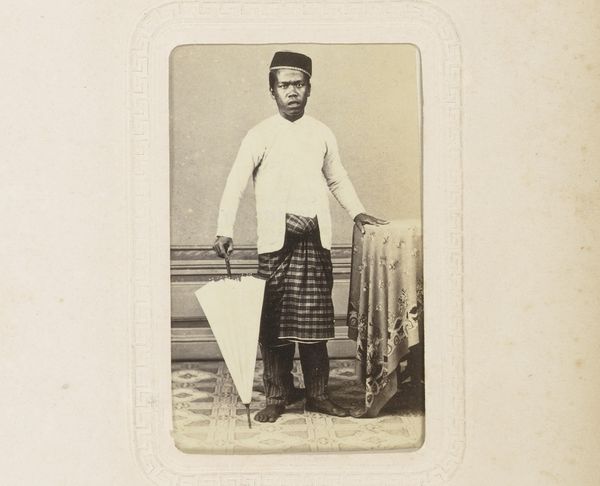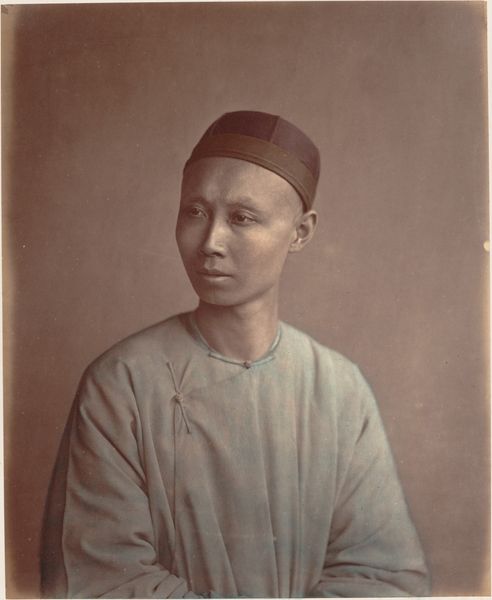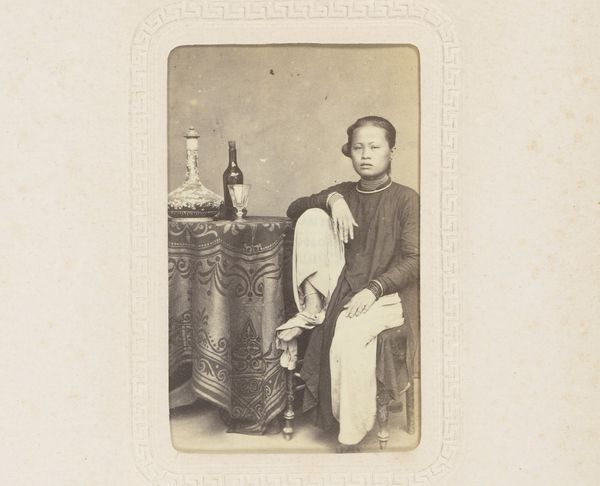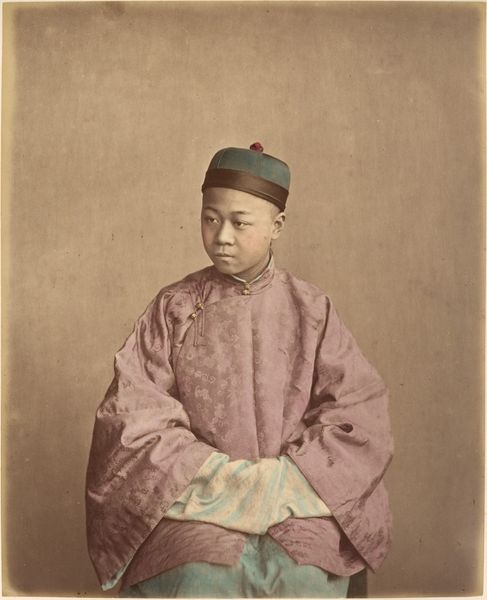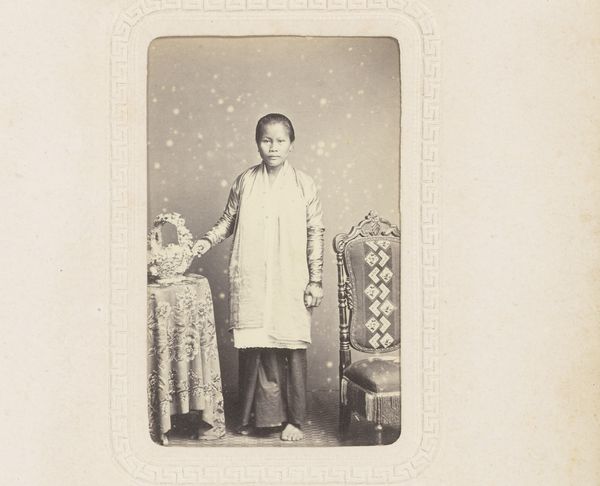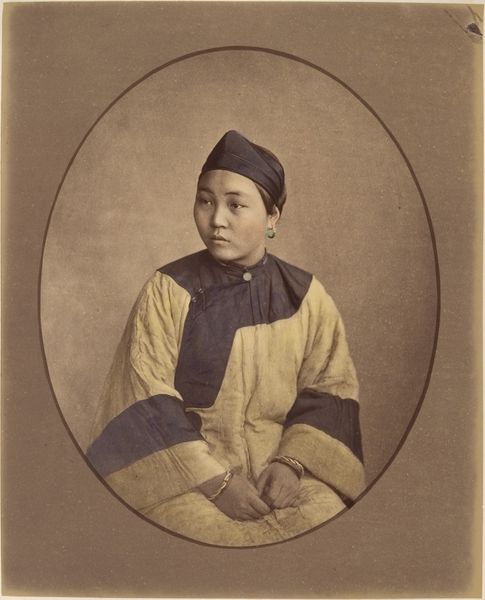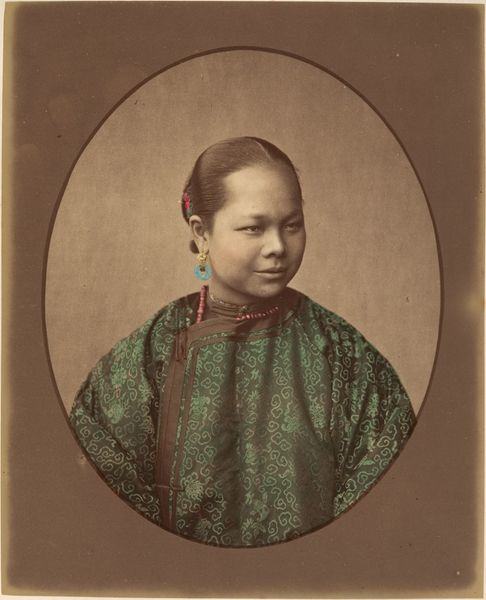
photography, gelatin-silver-print
#
portrait
#
still-life-photography
#
16_19th-century
#
photography
#
gelatin-silver-print
#
men
Dimensions: Image: 7 in. × 4 15/16 in. (17.8 × 12.5 cm) Mount: 14 13/16 × 11 1/8 in. (37.7 × 28.2 cm)
Copyright: Public Domain
Curator: Looking at this fascinating photograph, "Ambassade Cochinchinoise à Paris," taken by Louis Rousseau in 1863, I’m immediately struck by the young man's gaze. Editor: It's the austerity that catches my attention first. The tonality of the gelatin-silver print and the sparse composition speak volumes about the technical constraints and artistic choices available at the time. Curator: Absolutely. Considering the sociopolitical context of the 19th century, this portrait opens up many questions regarding power dynamics. Cochinchina, now part of Vietnam, was under French colonial rule. What did it mean for this young man to represent his nation in Paris at that historical juncture? It's a pivotal example of the way identity and representation were constructed and negotiated through photography. Editor: And let's consider the materials themselves. The use of gelatin-silver printing – relatively new then – speaks to a desire for precision and permanence. What kind of labor went into preparing the chemicals, the plates? We can analyze it as both an object of art and of production. Curator: The photograph is interesting because the Western gaze historically classified, judged, and dominated. Rousseau's portrait freezes a specific moment within this history. Who this man was and how he chose to be represented complicates this story. It brings into play notions of resistance, compliance, and everything in between. Editor: There's something unsettling about such controlled formality. Consider his attire, carefully arranged. Is it traditional clothing, or a Western interpretation designed for Parisian sensibilities? The consumption and display of his image reinforces colonial narratives while also inadvertently preserving this individual’s likeness, allowing him some presence today. Curator: Precisely. Viewing this image today allows us to interrogate that complex dynamic, inviting critical engagement with the colonial gaze, and the intersection of representation, identity, and historical power structures. Editor: It's fascinating how examining materials and method brings an element of class and production and raises important questions about access, labor and social context to a still photograph.
Comments
No comments
Be the first to comment and join the conversation on the ultimate creative platform.
